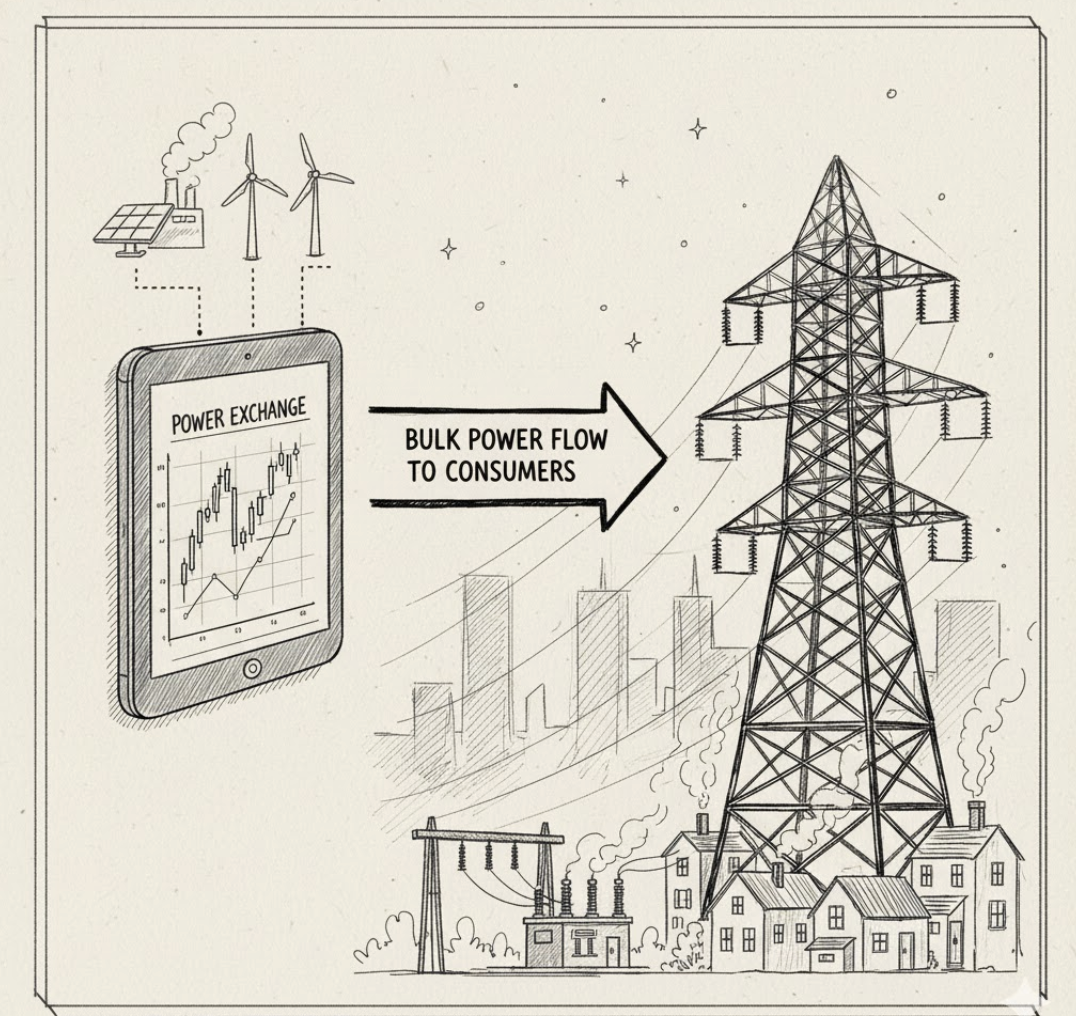
How we calculate Open Access Power Cost ?
When a consumer buys electricity directly from the market instead of the local DISCOM, it’s called Open Access (OA). But while the energy price on the power exchange (like IEX) may look attractive, the final landed cost at the consumer’s end includes several components losses, charges, and surcharges. Let’s break it down .


Before this electricity reaches the consumer, it travels through multiple layers of the grid interstate (ISTS), state (STU), and local distribution (wheeling). Each layer incurs technical losses. After accounting for around 4.24% ISTS losses, 3% state transmission losses, and 6% wheeling losses (for a 33kV supply), the consumer finally receives about 87.31 kWh of usable power. For a 132kV supply, since wheeling losses are negligible, the consumer gets roughly 92.89 kWh.
Apart from these losses, there are a few mandatory charges. The IEX transaction fee of ₹0.02/kWh with applicable service tax adds a small amount, while the Central Transmission Utility (CTU) and State Transmission Utility (STU) levy charges of ₹0.42/kWh and ₹0.3445/kWh respectively. Consumers connected at lower voltages also pay wheeling charges to use the distribution network around ₹0.2979/kWh in this case.
Another major component is the regulatory surcharge. The Cross Subsidy Surcharge (CSS) is designed to compensate DISCOMs for the loss of high-paying consumers. For a 33kV consumer, it typically amounts to ₹1.40/kWh, while for a 132kV consumer it is ₹0.94/kWh. The Additional Surcharge may apply in certain states but is considered zero in this example.
When all these components are added, the effective landed cost of Open Access power comes to around ₹6.04/kWh for 33kV supply and ₹5.00/kWh for 132kV supply. Although this is higher than the exchange energy price, it still remains lower than typical DISCOM tariffs for industrial users, which range between ₹7 and ₹9 per unit.
In essence, Open Access enables large consumers to directly procure power at competitive prices, often resulting in 10–30% savings compared to traditional supply. However, understanding how each cost component from transmission losses to surcharges contributes to the final landed rate is key to making informed decisions and optimizing power procurement strategies.

